** Part 4: Mexico City **
**Introducing Mexico City**
Mexico City, the capital of Mexico, is big and populous. The city proper is 1,485 sq km (almost as big as our Melaka state) and has a population of 9 millions. The Mexico City Metropolitan Area or Greater Mexico City has an area of 7,850 sq km (like Selangor) and has a population of 22 millions. It is located on the basin of the Valley of Mexico in the south-central highlands. The lowest part is around 2,240 m. Mexico City is earthquake prone. Many parts are sinking too as the foundation soil is soft clay from a former dried-out lake.
History
The original city was called Tenochtitlan, built on an island in Lake Texcoco by the Aztecs in 1325. It was completely destroyed by the invading Spanish in 1521. A new city was built over it complying to Spanish urban standards. The Spanish called it Mexico which was an alternate form of the word Tenochtitlan. The first viceroy was established here in 1535.
** The city center **
Mexico City Metro
The city proper has 9 million people so they need an efficient transportation system. They do have that: the rapid transit subway. The Mexico City Metro has 12 lines totaling 226 km and serving 195 stations. Fare is cheap, about RM 1 per entry into the system. Very efficient too, coaches running at intervals of only a few minutes. Each station has a name as well as a symbolic figure to identify the station, to help those illiterate. The station chart displayed on the coach has the names as well as the symbols. The Metro is supplemented by commuter trains in the outskirts. Shown a station chart displayed on the coach, and painted coaches of a commuter train.
Catedral Metropolitina
The cathedral is the most impressive building fronting the city’s main square, the Zocalo. This is the biggest church in Latin America and it serves the World’s largest Catholic diocese. It was built between 1525 and 1813. Yes, many hundreds of years to complete. The towers are 67 m in height.
Palacio Nacional
Built shortly after the conquest of Mexico, this was the palace for the first Spanish viceroys who ruled Mexico. Now it houses the office of the President. The most striking feature is the giant mural above its main staircase painted by one Diego Rivera between 1929 and 1935. There are also smaller panels on the walls on the first floor. The whole series is an illustrated history of the country.
Museo Nacional de Antropologia
The renowned National Museum of Anthropology is rich in exhibits. A big museum. Unfortunately not much info in English. Presented here 2 huge exhibits: the colossal head from the Olmec period and the statue of the Aztec Mother Goddess Coatlicue. Check the size of the people in the photos. Plus 3 more "funny" ones
And some exotic face masks.
Alameda Central
This is a huge public park located at the western end of the Historic center, created in 1539. There are many sculptures in the park.
Two notable buildings near Alameda Central
The imposing Palacio de Bellas Artes with its Art Nouveau architecture is the opera house. The 41-storey Torre Latinoamericana is the first skyscraper built in Mexico, completed in 1956, and has survived several earthquakes.
Monumento a la Revolucion
This is a landmark and open monument built in 1932 dedicated to the Mexican Revolution in 1910. The heroes of the revolution were also buried here.
When we were here, the whole area under the open dome-shaped monument and space adjacent to it was occupied by protesters who have camped there for days. And they held peaceful street demonstration on the nearby streets. The police directed traffic for them to walk around and shout out their demands. No idea what were their demands.
Street scene
Some street scenes: deserted street on a Sunday morning at the Historic center, huge crowd on a Sunday afternoon at the Chapultepec Park, a huge public park 686 hectares in size.
A unique bronze bench to relax and one of several giant lighted faces at the Zocalo. The Zocalo area is under renovation.
Earning a living in a 9-million-people city is not easy: be it a street musician or a mimic, or a shoe-shine professional. There are many such shoe-shine “stalls” in the city center, all on the same high-chair design, probably sanctioned by the city authority.
Street performance
Happened to watch a street performance. No idea what was the occasion or theme.
**Beyond the city center**
Xochimilco
Xochimilco is a big district at the southern fringe of the city proper, about 45 sq km in size. It was originally an island settlement on the southern shore of Lake Xochimilco and not related to the settlement of the old Mexico City (Tenochtitlan). After the conquest, the Spanish built a bridge to connect it to Mexico City. When the lake dried out, the bridge became the main road. And the lake turned into a settlement with many canals, totalling some 170 km and the artificial islands, called chinampas. It is a UNESCO World Heritage Site. The place has become a tourist attraction with colourful gondola-like boats, the trajineras, powered only by man, plying the canals. We were here for a few hours, entertained by musicians and mildly harassed by hawkers on boats. It was a weekend, with many local people.
Basilica of Our Lady of Guadalupe
This is the most famous Catholic church in Mexico located at the northern part of the city. According to the church accounts the Virgin Mary appeared to a farmer Juan Diego at the Hill of Tepeyac on December 9th, 1531. Juan reported the encounter to the local bishop who told Juan to ask the lady for a miraculous sign to prove her identity if she appeared to him again. She did appear again and told Juan to pack some flowers in his peasant clock or tilma to bring them to the bishop. Juan did that and saw the bishop the second time, on December 12th. After taking out the flowers, they found that the image of the Virgin Mary imprinted on the inside of the tilma.
The image that appears on the tilma is called Our Lady of Guadalupe by the Catholic Church. The apparition of the Virgin Mary here is one of the very few recognized by the Catholic Church as "worthy of belief". There are many miracles and supernatural properties associated with the image. I am not going to list them to burden the readers, except on one point. The tilma was made of natural plant material, likely agave leaves. A normal one would last 15 years at the most. This one lasted 500+ years without any structural degradation, exposed to dust, heat and humidity. For the 1st 115 years, it was left open (not even covered by glass) for veneration, touched by pilgrims and soaking up candle fumes, etc. The continued existence is in itself a miracle.
Shown a painted copy of the image. The Virgin Mary looks more like an indigenous girl. The original image does not have the starburst and dragon below her feet. These were painted later, not part of the "miracle".
After the miraculous appearance of the image, a chapel was built at the site where the Virgin Mary first appeared. The chapel building was later expanded and became a full church in 1709 and was called the Basilica since 1904. Then a new building or the New Basilica was built between 1974 and 1976.
The Lady of Guadalupe is the patroness of Mexico and a national symbol. She is the patroness of the Philippines too. This original shrine at the Hill of Tepeyac is the most visited Marian shrine in the World, up to 10 million people a year. Over the Friday and Saturday on December 11th and 12th in 2009, it was estimated 6 million pilgrims visited the shrine to commemorate the anniversary of the apparition, as reported by wikipedia. A line of the Mexico City Metro ends at the shrine.
We were here for a few hours on a Monday afternoon. Shown the Old Basilica, and the internal decoration. The last photo shows the Pocito Chapel, not part of the Old Basilica.
The New Basilica is round in shape, 100 m in diameter and can accommodate 10,000 people. Including the square outside the churches, the shrine could accommodate 50,000 people. The original image of Our Lady of Guadalupe is now housed at the altar, the 2nd photo. We attended a mass here presided by a bishop or archbishop and accompanied by some 60 other priests. There was a procession too before the mass. All in Spanish of course. Not aware of what was the special occasion.
Teotihuacan
Teotihuacan is an archaeological ruin 40 km north-east of the city center, but still within the Greater Mexico City. It is a UNESCO World Heritage site and the most visited archaeological site in Mexico. It was built around 100 BC to 250 AD and abandoned in the 7th or 8th century. It probably peaked around 500 AD with some 125,000 people, the largest pre-Columbian city. It is still unclear which tribe started the city. It is famous for its pyramids.
The 1st two photos show the Temple of Quetzacoatl, the next 2 show a residential area The unique feature of this old city is the residential building system. Here giant houses up to 10,000 sq m in built-up area were built to house multiple families. And multi-storey even, very rare at the times of the old civilization.
The most impressive structure is the Pyramid of the Sun which is about the same size as the Great Giza Pyramid in Egypt, but only half the height. Visitors are allowed to climb up the pyramid. Shown a view of the area from the top of the pyramid and a view of the smaller Pyramid of the Moon.
** Part 5: Trivia **
Answering some questions raised in the earlier parts
HK commented that he made a business trip to Guatemala City in 1990 and was alarmed that many youths were carrying guns. But that was at a time when the civil war was still going on. We didn't see any such armed people.
Several other friends congratulated us on being so brave to go to Mexico infamous for its drug wars and violence. Not lah, we are more sia-si than most. We did read about that before. But I don't think such drug wars will be fought in tourist areas. We didn't feel threatened. But Mexico City has a lot of army and police personnel. Their presence was clearly felt.
JT asked that why we were seeing so many ruins, were they not the same? Well, the planning was that of our leader LM. Yes, we did feel tired of seeing so many. But every one is supposed to be different in certain ways. Because we stopped at each ruin only for a few hours we could not appreciate the differences among them. Can you differentiate a Prada from a LV without looking at the labels? But you love both, don't you. Anyway these ruins are from different eras and built by different tribes.
Our greatest difficulty or problem? Has to be our inability to understand Spanish. The trip would certainly be more enjoyable if we could converse with our hosts in the home-stays in Cuba or Guatemala. Ducks don't talk to chickens, not even in Central America. Might have enjoyed our meals more if we could read Spanish menus. To order pork rib, we had to point at our ribs, no joke. But we survived lah. My Hokkien wife was happy 2 Spanish words and their Hokkien versions are the same, si si or "yes" and pang geo (banio) or "go toilet". I am a 4-D kaki, I know only 4 numbers: one (uno), two (dos), four (cuatro) and ten (diez). Why 4 and not 3? Why, you tried threesome before! Why 10 and not 9? Perfect 10 mah, you heard of Perfect 9 meh?
Photo credit
All photos are mine, except a group photo at the village of San Jorge de Laguna in Guatemala. Nothing downloaded from the internet except an image of Our Lady of Guadalupe and the maps.
KG the digital-illiterate commented why my photos all look so "blurry"? Aiyo, these are digital copies greatly reduced in resolution to fit into emails lah. My photography skill is 1st class you know, KG? Just like my boastfulness is 1st class! How can my original photos be blurry? The images presented here is around 0.1 Megapixels each. My original is around 4 to 8 Megapixels, or 40 to 80 times finer in details. So you can imagine how beautiful my original looks lah, KG! Why don't I send the original? Then downloading my email will take you 2 days, not 0.02 second. Yahoo won't allow me to send such ridiculously-sized email too.
Final words: caveat
The info mentioned is 100% true only if the source is 100% true. Observations 80% mine, 20% wife's, descriptions 40% exaggerated, opinions expressed 80% biased. I hope my mature readers understand this caveat. Don't quote, "Must be true, Hon says one...."
Coming: The Catholic churches (limited edition)
I would be preparing another story on the Catholic churches, especially the shrine of Our Lady of Guadalupe. To be sent only to my Catholics friends.
Thanks for reading. Hope you have enjoyed reading my story as much as I have enjoyed writing it. Merry Christmas and Happy New Year 2014.
Hon
(16-12-2013)
(First written in September 2013. Revised in November 2018)















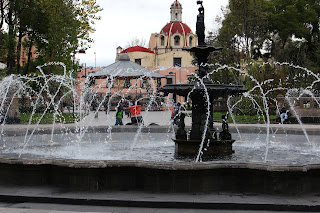



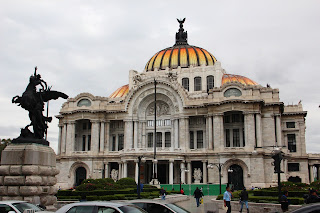

















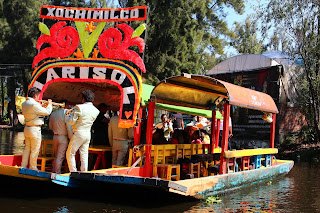




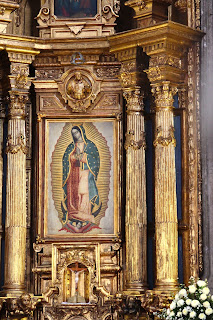



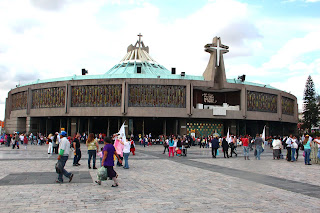











No comments:
Post a Comment